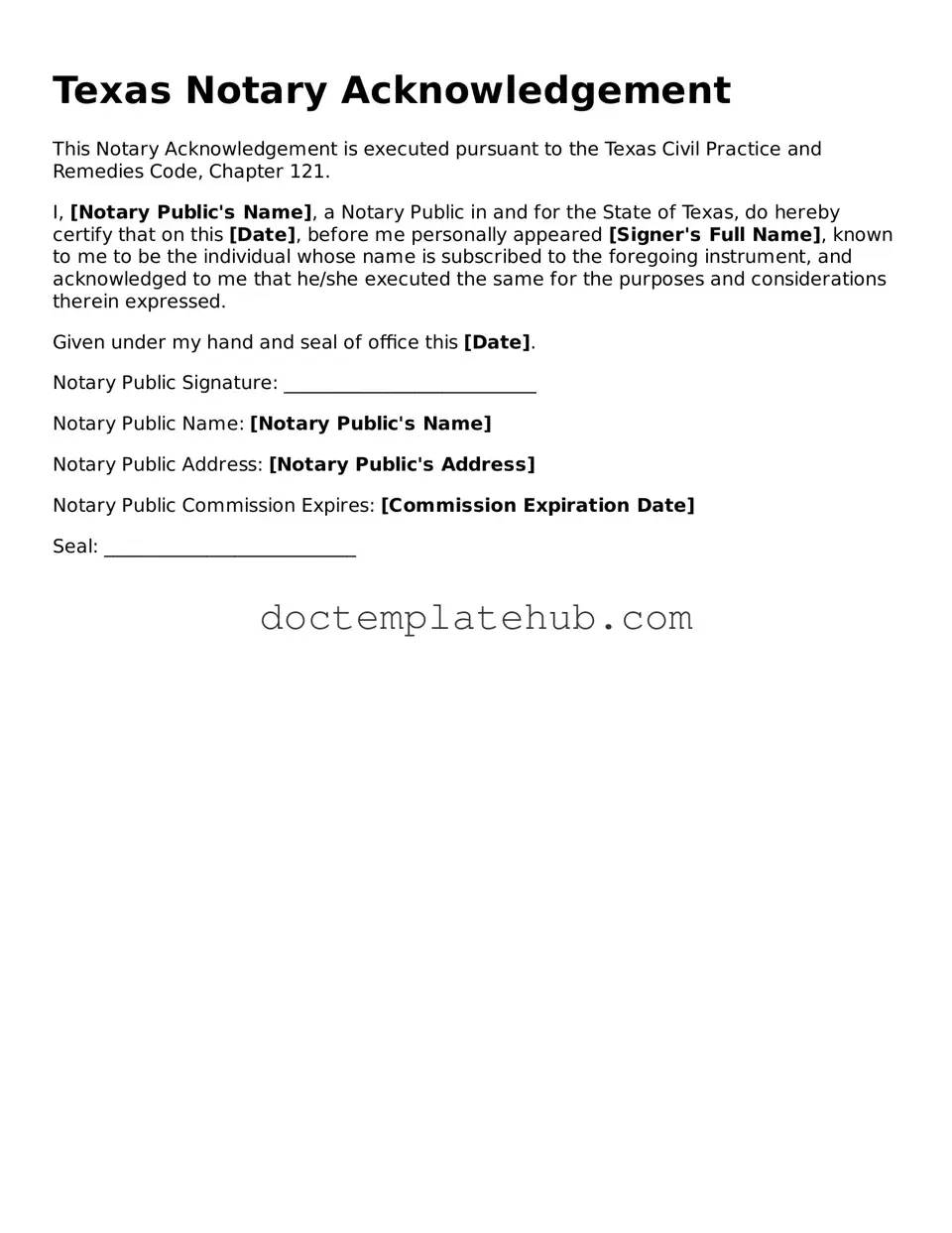What is a Texas Notary Acknowledgement form?
The Texas Notary Acknowledgement form is a document used to verify that a person has willingly signed a document in front of a notary public. This form serves as proof that the signer was identified and acted without coercion. It’s commonly used in real estate transactions, legal documents, and other formal agreements where verification is necessary.
Who can act as a notary public in Texas?
In Texas, a notary public can be anyone who is at least 18 years old, a resident of Texas, and a U.S. citizen or legal resident. They must also complete the required training and pass an exam. Once appointed, notaries are authorized to perform notarial acts, such as acknowledgments, oaths, and affirmations.
Why is a notary acknowledgement important?
A notary acknowledgement is crucial because it adds a layer of authenticity to a document. It helps prevent fraud by ensuring that the signer is who they claim to be and that they are signing voluntarily. Many institutions, including banks and courts, require notarized documents to ensure their validity.
What information is included in the Texas Notary Acknowledgement form?
The form typically includes the name of the signer, the date of the acknowledgment, the notary's signature, and their seal. It may also contain details about the document being acknowledged, such as its title or type. This information helps establish the context and purpose of the notarization.
Can I use a Texas Notary Acknowledgement form for any document?
Yes, you can use a Texas Notary Acknowledgement form for a variety of documents, as long as the document requires notarization. This includes contracts, deeds, affidavits, and more. However, certain documents may have specific requirements, so it’s wise to check if a particular form is needed.
How do I complete a Texas Notary Acknowledgement form?
To complete the form, the signer must appear before the notary. The notary will verify the signer's identity, ensure they understand the document, and confirm that they are signing voluntarily. Afterward, the notary will fill out the form, including their signature and seal, to finalize the acknowledgment.
Is there a fee for notarization in Texas?
Yes, notaries in Texas are allowed to charge a fee for their services. The maximum fee for an acknowledgment is generally set by state law, but it can vary. It’s a good idea to check with the notary beforehand about their fees to avoid any surprises.
How long is a Texas Notary Acknowledgement form valid?
The validity of a Texas Notary Acknowledgement form doesn’t have a specific expiration date. However, the document itself may have its own validity period, depending on the nature of the agreement or transaction. It’s best to consult with a legal professional if you have concerns about the timing.
Where can I find a Texas Notary Acknowledgement form?
You can find a Texas Notary Acknowledgement form through various sources, including online legal document services, law offices, or even local notaries. Many notaries also have their own templates that they can provide. Just ensure that the form you use meets Texas state requirements.
